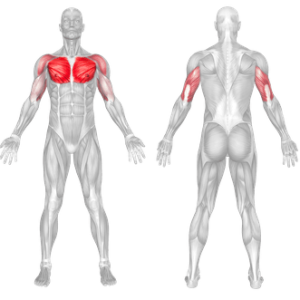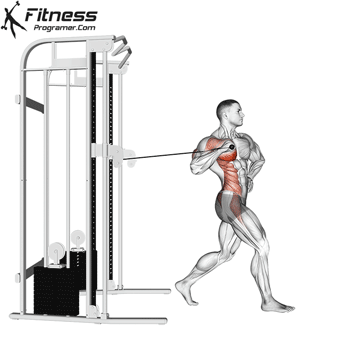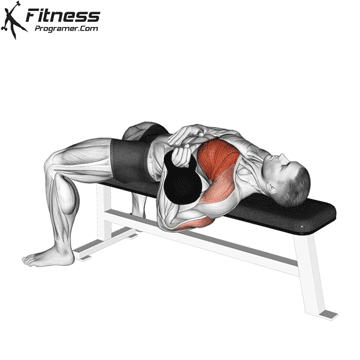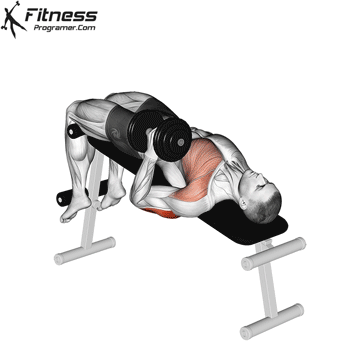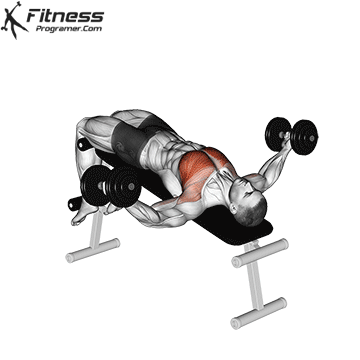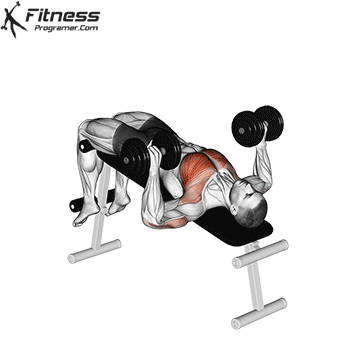One Arm Decline Cable Fly Overview
The one arm decline cable fly is a unilateral chest isolation exercise. This exercise isolates the lower portion of the pectoralis major, promoting strength, definition, and balance between both sides of the chest. Can be included in chest hypertrophy workouts, muscle activation drills, or rehabilitation programs.
How to Perform the One-Arm Decline Cable Fly
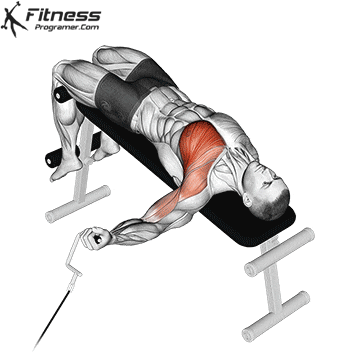
Setup:
- Adjust the cable machine to a low position. Attach a single handle to the cable.
- Set up a decline bench (around 15-30 degrees) near the cable machine.
- Secure your feet in the bench’s foot pads to maintain stability.
- Grab the handle with one hand and lie back on the bench, keeping your non-working hand on your torso or gripping the bench for support.
Execution:
Starting Position:
- Extend your arm straight above your chest with a slight bend in the elbow.
- Keep your palm facing inward (neutral or slight pronation).
Lowering Phase (Eccentric Movement):
- Slowly lower your arm in a wide arc to the side.
- Stop when you feel a deep stretch in your chest (your elbow should be slightly below shoulder level).
Lifting Phase (Concentric Movement):
- Engage your chest and bring your arm back up in a smooth arc.
- Squeeze your pec at the top of the movement.
Repeat for the desired number of reps (8-15 reps is a good range).
Switch Sides and perform the same movement on the other arm.
Common Mistakes to Avoid
- Using too much weight – Prioritize control and mind-muscle connection.
- Locking the elbow – Keep a slight bend to avoid joint stress.
- Dropping the arm too low – Stop at or slightly below chest level.
- Rushing the movement – Perform with a slow, controlled tempo.
- Twisting the torso – Keep your core engaged to maintain stability.
Training Variables & Modifications
Reps & Sets:
- Hypertrophy (Muscle Growth) → 3-4 sets of 8-12 reps
- Endurance & Stability → 3 sets of 12-15 reps
Tempo Recommendation:
- Slow Eccentric (Negative Phase) → 3-4 seconds
- Fast Concentric (Lifting Phase) → 1-2 seconds
Modifications for Beginners:
- Perform flat-bench or machine-based cable fly first.
- Use lighter weight with higher reps for control.
- Perform with both arms first before progressing to unilateral.
Progressions for Advanced Lifters:
- Increase the decline angle to 30-45° for more lower pec activation.
- Use a slow eccentric tempo (4-5 seconds) for greater muscle damage.
- Super Set with decline dumbbell press for intensity.
Benefits of the One-Arm Decline Cable Fly
1. Superior Lower Chest Activation
- The decline angle shifts the emphasis onto the sternal head of the pectoralis major, which is responsible for the lower chest development. Helps create a well-defined, fuller lower chest, enhancing aesthetics.
2. Unilateral (Single-Sided) Strength Development
- Training one arm at a time corrects muscular imbalances between the left and right sides. Helps identify and address weaknesses in the chest or shoulder stabilizers.
3. Constant Tension for Greater Muscle Engagement
- Unlike free weights (dumbbells), cables provide continuous tension throughout the movement. Leads to better muscle fiber recruitment and greater time under tension (TUT), which enhances hypertrophy (muscle growth).
4. Greater Range of Motion (ROM)
- Allows for a deep stretch at the bottom and a strong contraction at the top. Unlike barbells or machines, the cable system lets you move more freely, adjusting the angle for optimal chest engagement.
5. Versatile and Easily Adjustable
- Can be modified for different fitness levels (lighter weight for beginners, slower negatives for advanced lifters).
Muscles Worked
